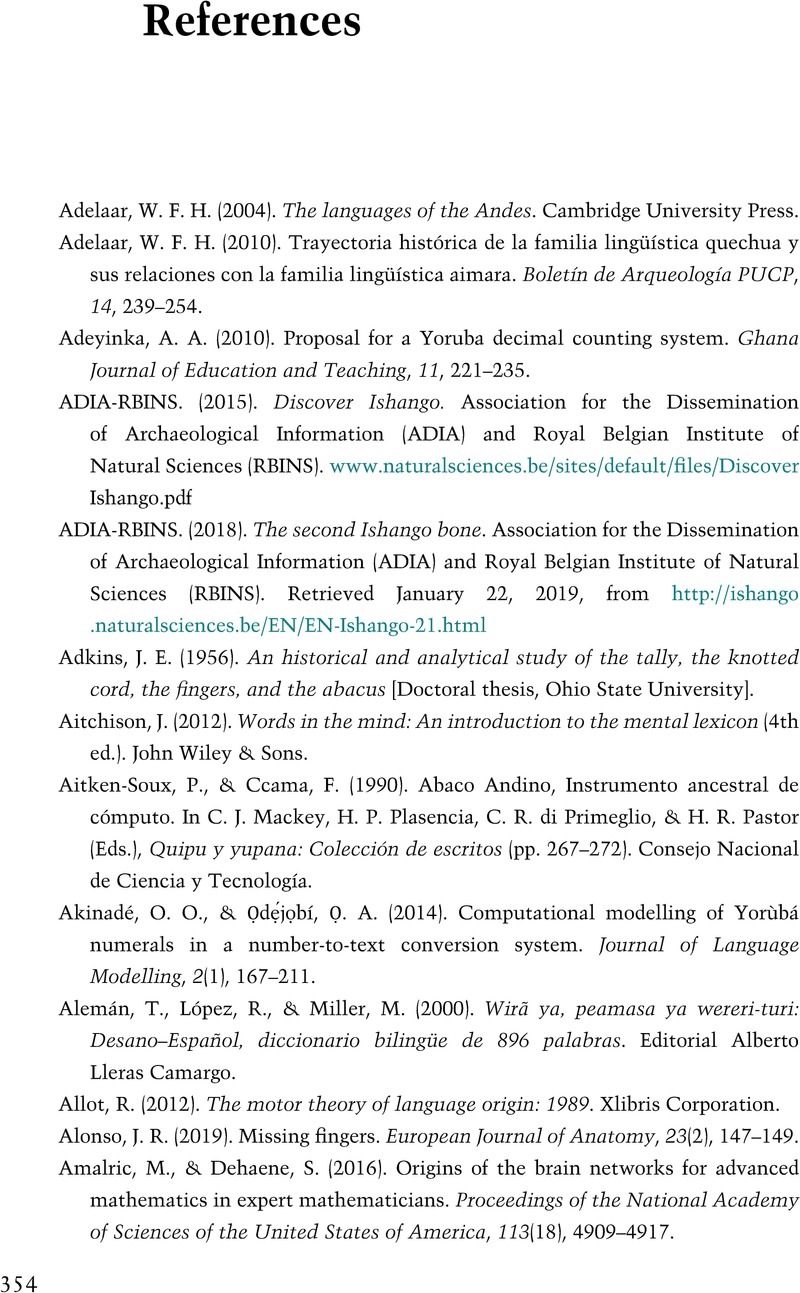Book contents
- The Materiality of Numbers
- The Materiality of Numbers
- Copyright page
- Contents
- Figures
- Tables
- Acknowledgments
- Foreword
- Preface
- 1 Numbers in a Nutshell
- 2 Converging Perspectives on Numbers
- 3 The Brain in Numbers
- 4 Bodies and Behaviors
- 5 Language in Numbers
- 6 Global and Regional Patterns
- 7 Materiality in Numbers
- 8 Materiality in Cognition
- 9 Making Quantity Tangible and Manipulable
- 10 Tallies and Other Devices That Accumulate
- 11 Interpreting Prehistoric Artifacts
- 12 Devices That Accumulate and Group
- 13 Handwritten Notations
- 14 The Materiality of Numbers
- References
- Index
- References
References
Published online by Cambridge University Press: 11 May 2023
- The Materiality of Numbers
- The Materiality of Numbers
- Copyright page
- Contents
- Figures
- Tables
- Acknowledgments
- Foreword
- Preface
- 1 Numbers in a Nutshell
- 2 Converging Perspectives on Numbers
- 3 The Brain in Numbers
- 4 Bodies and Behaviors
- 5 Language in Numbers
- 6 Global and Regional Patterns
- 7 Materiality in Numbers
- 8 Materiality in Cognition
- 9 Making Quantity Tangible and Manipulable
- 10 Tallies and Other Devices That Accumulate
- 11 Interpreting Prehistoric Artifacts
- 12 Devices That Accumulate and Group
- 13 Handwritten Notations
- 14 The Materiality of Numbers
- References
- Index
- References
Summary

- Type
- Chapter
- Information
- The Materiality of NumbersEmergence and Elaboration from Prehistory to Present, pp. 354 - 405Publisher: Cambridge University PressPrint publication year: 2023



